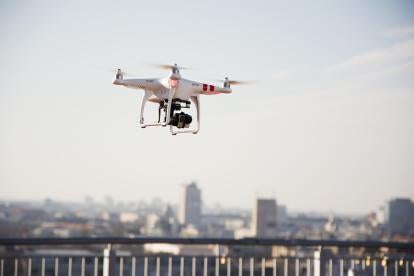On April 19, the U.S. Senate overwhelmingly passed the Federal Aviation Administration (FAA) Reauthorization Act (S.B. 2658) by a vote of 95-3. The Senate bill is a stopgap measure that greenlights $33 billion for FAA programs through fiscal year 2017 and brings the U.S. one step closer to integrating unmanned aircraft systems (UAS) into the nation’s airspace.
The bill received bipartisan support in the Senate, but may face difficulties in the House because it does not require the privatization of air traffic control. The House has a competing bill, the Aviation Innovation, Reform and Reauthorization Act (H.R. 4441). The House could approve the Senate bill or the two legislative chambers could come to a compromise on their different bills before sending to the President to be signed into law.
Current UAS, or drone, regulations and rules exist at various levels of local, state, and federal government. The majority of state laws fall into three broad categories:
-
privacy protections;
-
law enforcement restrictions; and
-
hunting restrictions
Specifically, the National Conference of State Legislatures shows 41 states with active UAS legislation in 2016, and 23 states (Arkansas, California, Florida, Hawaii, Idaho, Illinois, Indiana, Louisiana, Maine, Maryland, Michigan, Mississippi, Nevada, New Hampshire, North Carolina, North Dakota, Oregon, Tennessee, Texas, Utah, Virginia, West Virginia, and Wisconsin) that have passed legislation. The Association for Unmanned Vehicle Systems International (AUVSI) Advocacy group offers an interactive map of state UAS laws.
The Senate bill would preempt some state and local regulations. For example, Section 2142 of the bill provides that no state or political subdivision of a state “may enact or enforce any law, regulation, or other provision having the force and effect of law relating to the design, manufacture, testing, licensing, registration, certification, operation, or maintenance of an unmanned aircraft system, including airspace, altitude, flight paths, equipment or technology requirements, purpose of operations, and pilot, operator, and observer qualifications, training, and certification.” Generally, this should make it easier for commercial UAS operators to fly while in compliance with one set of rules, rather than three (e.g., federal, state, and local rules).
But not all state and local authority would be preempted. The bill leaves intact state and local authority to enforce laws relating to “nuisance, voyeurism, harassment, reckless endangerment, wrongful death, personal injury, property damage, or other illegal acts.”
The bill also includes provisions that would address privacy and security concerns sometimes associated with drone use. In regards to privacy, the bill requires commercial operators to have a written privacy policy and defines a violation of that written privacy policy as an unfair and deceptive practice in violation of section 5(a) of the Federal Trade Commission Act codified at 15 U.S.C. § 45(a).
In regards to security, the bill requires the Director of the National Institute of Standards and Technology to collaborate with the FAA and other agencies to determine certain risk-based standards within a year of the passage of the bill. The FAA’s Advisory Rulemaking Committee on micro-UAS (mUAS) has started this risk-based work and proposed various categories of UAS operation, compliance, and regulation based on the risk-based approach.




 i
i

